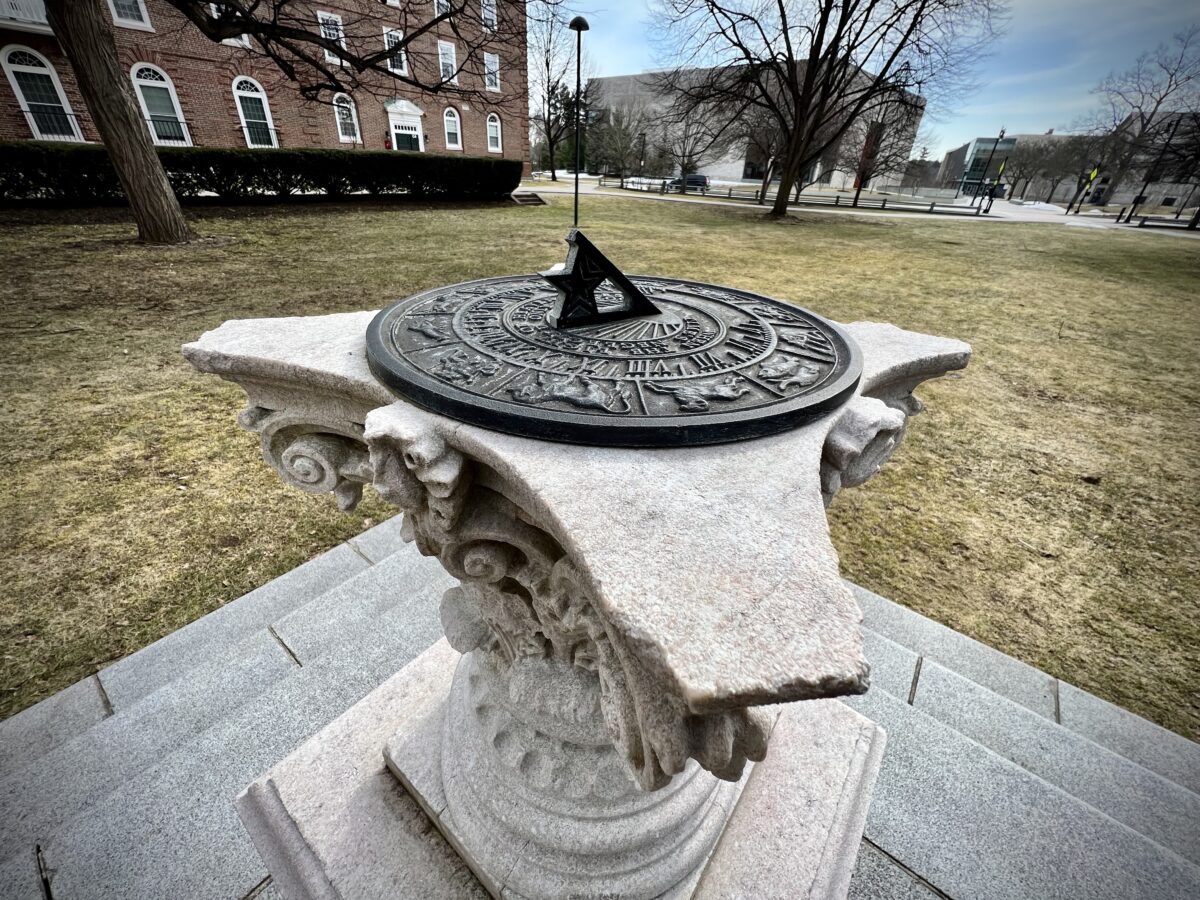Exeter Deconstructed: The sundial

The sundial on the south side of Exeter’s campus has been telling the time of day for a century — when the sun shines, at least — but it also reflects Exeter history.
The cast-iron timepiece atop a carved stone pedestal was installed in 1925, the same year the dorms that surround it, Amen, Cilley and Wentworth halls, were dedicated. Those dorms are named for revered Exeter educators from the 19th century. The pedestal bears the names of those who paid to build the structures.
AMEN HALL
WENTWORTH HALL
CILLEY HALL
Built 1925 with gifts
from the alumni
and friends of
the Academy
whose names are
inscribed hereon
The names inscribed thereon comprise a who’s who of famed Exeter benefactors. Thomas Lamont ’88 and William Boyce Thompson ’90 were banking and finance tycoons whose donations paid for the school’s infirmary, gymnasium, administration building and numerous dorms. James Norman Hill ’89 is best known for paying for the bridge that connects campus to playing fields across the Exeter River. Edward Stephen Harkness’ legacy endures in every Academy classroom 90 years after his most impactful gift helped re-imagine PEA’s pedagogy.
Also among the 19 names are Theodore Newton Vail, the visionary leader of AT&T; Morton D. Hull ’85, a five-term congressman from Illinois; and Bradley Webster Palmer ’84, a developing partner of Gillette Safety Razor Corp. and United Fruit Company, the massive agricultural conglomerate whose outsized and often exploitative influence in Central and South America politics inspired the unflattering term “banana republic.”
The sundial, pedestal and dais were relocated from the center of the quad to be nearer to Amen Hall during a renovation in 1980.
Editor’s note: This article first appeared in the spring 2022 issue of The Exeter Bulletin.